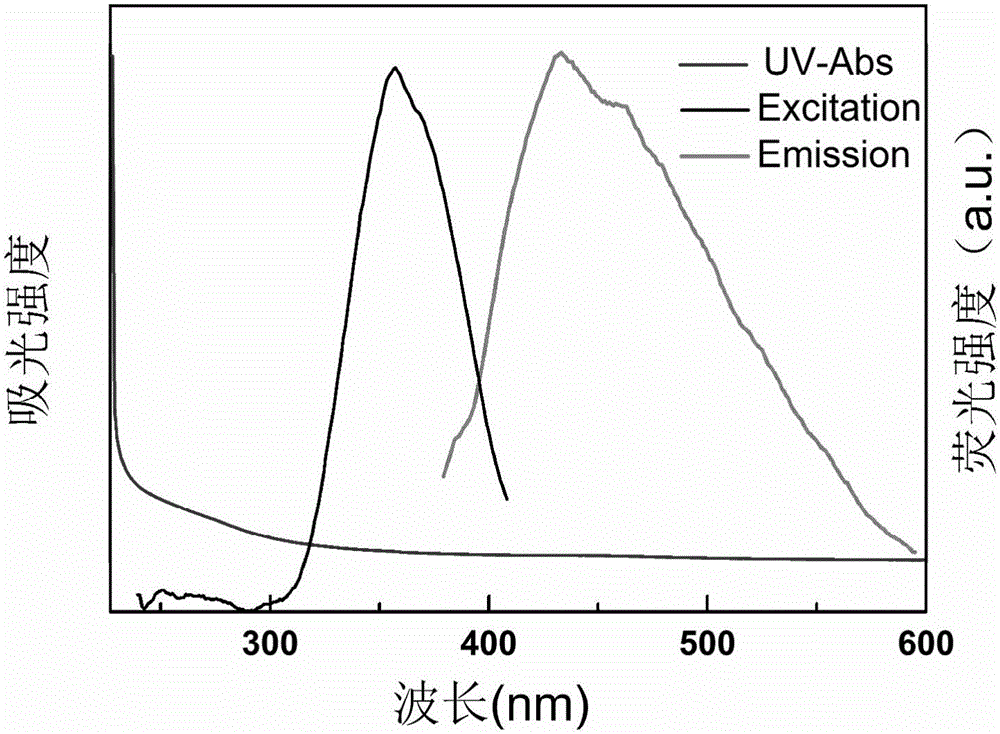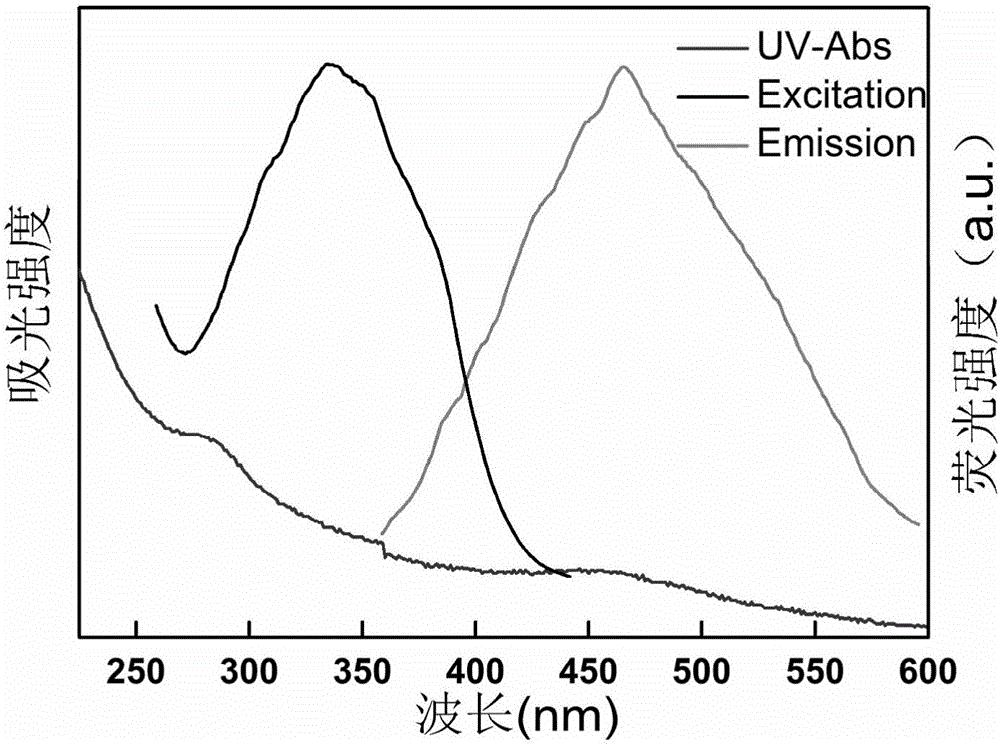Preparation method and application of phosphorus-doped fluorescent carbon quantum dots
A technology of carbon quantum dots and phosphorus doping, applied in the direction of fluorescence/phosphorescence, chemical instruments and methods, measuring devices, etc., can solve the problem of high cost, unfavorable continuous and large-scale production of carbon quantum dots, and low fluorescence quantum yield of carbon quantum dots and other problems, to achieve the effect of convenient operation, good solubility and dispersibility, and rapid completion
- Summary
- Abstract
- Description
- Claims
- Application Information
AI Technical Summary
Problems solved by technology
Method used
Image
Examples
Embodiment 1
[0033] Step 1, weigh 1.0g of phosphorus pentoxide and put it in a glass container, add 2mL of 30% phytic acid to react spontaneously, stir well, and obtain a dark brown sticky substance;
[0034] Step 2, after the glass container is cooled naturally, filter the insoluble matter with 11cm filter paper to obtain a clear dark brown solution;
[0035] Step 3, separation by size exclusion chromatography, Sephadex G-25 is used as filler, water is used as mobile phase, in chronological order, the color development of carbon quantum dot aqueous solution is tested by PH test paper as the standard, and red is displayed on PH test paper , the obtained fraction is named P-CDs (A), when the pH test paper color is yellow and the fraction color is yellow, the obtained fraction is named P-CDs (B), the pH test paper color is yellow and the fraction color is light pink is the obtained fraction Named P-CDs(C), and separated to obtain three carbon quantum dot aqueous solutions of A, B, and C;
...
Embodiment 2
[0039] Step 1, weigh 1.0g of phosphorus pentoxide and place it in a glass container, add 2mL of 10% phytic acid to react spontaneously, stir well, and obtain a dark brown sticky substance;
[0040] Step 2, after the glass container is cooled naturally, filter the insoluble matter with 11cm filter paper to obtain a clear dark brown solution, and obtain phosphorus-doped carbon quantum dots by freeze-drying;
[0041] In step 3, the above-mentioned P-CDs aqueous solution is freeze-dried to obtain the target carbon quantum dots, and its relative quantum yield (based on quinine sulfate) is 5.6%.
Embodiment 3
[0043] Step 1, weigh 1.0g of phosphorus pentoxide and place it in a glass container, add 2mL of 20% phytic acid to react spontaneously, and stir thoroughly to obtain a dark brown sticky substance;
[0044] Step 2, after the glass container is naturally cooled, filter with 11cm filter paper to remove insoluble matter to obtain a clear dark brown solution, and obtain carbon quantum dots by freeze-drying;
[0045] In step 3, the above-mentioned P-CDs aqueous solution is freeze-dried to obtain the target carbon quantum dots, and its relative quantum yield (taking quinine sulfate as a standard) is 6%.
PUM
| Property | Measurement | Unit |
|---|---|---|
| particle size | aaaaa | aaaaa |
Abstract
Description
Claims
Application Information
 Login to View More
Login to View More - R&D
- Intellectual Property
- Life Sciences
- Materials
- Tech Scout
- Unparalleled Data Quality
- Higher Quality Content
- 60% Fewer Hallucinations
Browse by: Latest US Patents, China's latest patents, Technical Efficacy Thesaurus, Application Domain, Technology Topic, Popular Technical Reports.
© 2025 PatSnap. All rights reserved.Legal|Privacy policy|Modern Slavery Act Transparency Statement|Sitemap|About US| Contact US: help@patsnap.com



